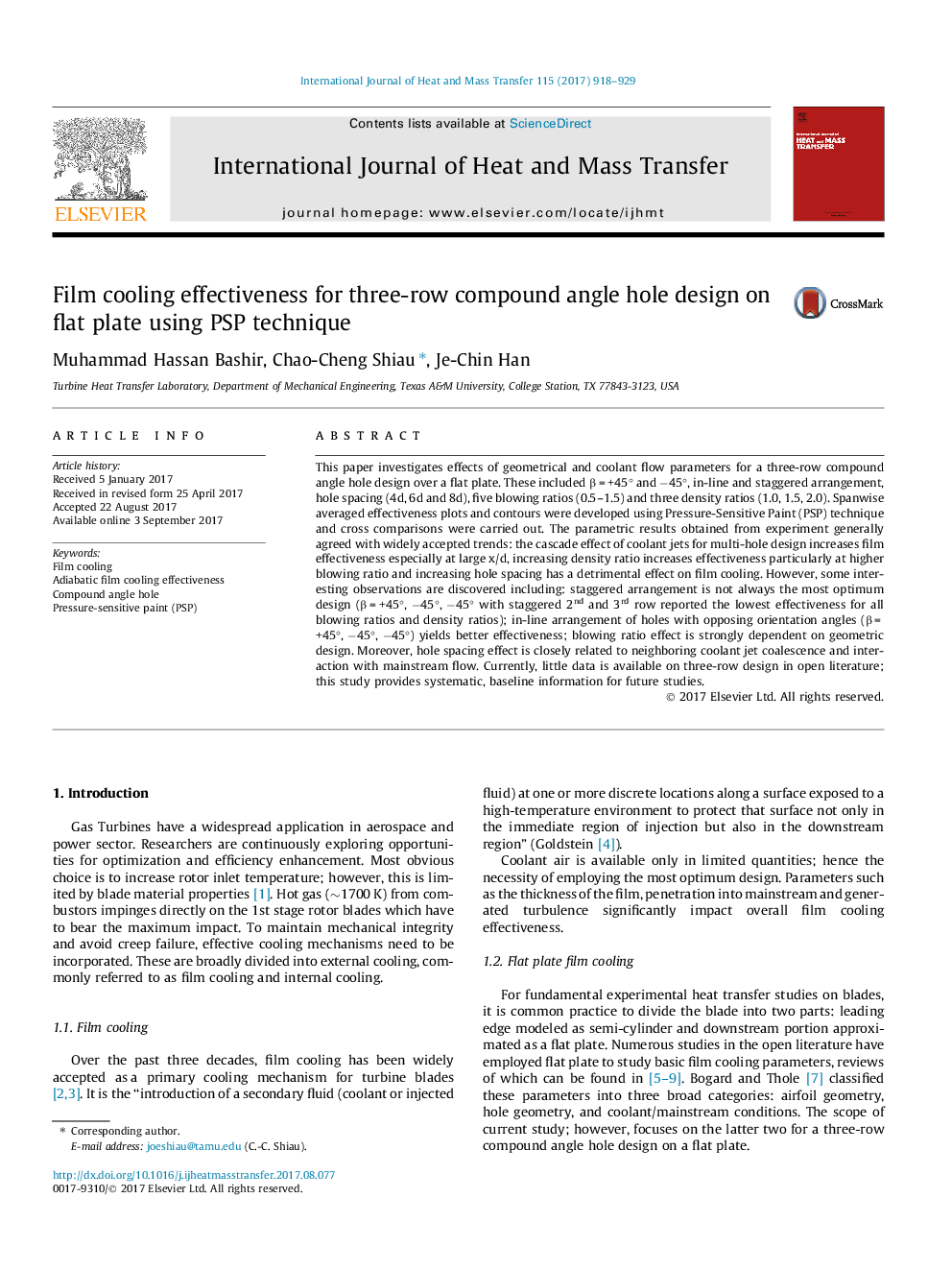| Article ID | Journal | Published Year | Pages | File Type |
|---|---|---|---|---|
| 4994022 | International Journal of Heat and Mass Transfer | 2017 | 12 Pages |
Abstract
This paper investigates effects of geometrical and coolant flow parameters for a three-row compound angle hole design over a flat plate. These included β = +45° and â45°, in-line and staggered arrangement, hole spacing (4d, 6d and 8d), five blowing ratios (0.5-1.5) and three density ratios (1.0, 1.5, 2.0). Spanwise averaged effectiveness plots and contours were developed using Pressure-Sensitive Paint (PSP) technique and cross comparisons were carried out. The parametric results obtained from experiment generally agreed with widely accepted trends: the cascade effect of coolant jets for multi-hole design increases film effectiveness especially at large x/d, increasing density ratio increases effectiveness particularly at higher blowing ratio and increasing hole spacing has a detrimental effect on film cooling. However, some interesting observations are discovered including: staggered arrangement is not always the most optimum design (β = +45°, â45°, â45° with staggered 2nd and 3rd row reported the lowest effectiveness for all blowing ratios and density ratios); in-line arrangement of holes with opposing orientation angles (β = +45°, â45°, â45°) yields better effectiveness; blowing ratio effect is strongly dependent on geometric design. Moreover, hole spacing effect is closely related to neighboring coolant jet coalescence and interaction with mainstream flow. Currently, little data is available on three-row design in open literature; this study provides systematic, baseline information for future studies.
Related Topics
Physical Sciences and Engineering
Chemical Engineering
Fluid Flow and Transfer Processes
Authors
Muhammad Hassan Bashir, Chao-Cheng Shiau, Je-Chin Han,
